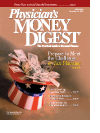Publication
Article
Physician's Money Digest
Tasmania: Enjoy Holidays Aussie-Style
Author(s):
Where do the citizens of Melbourne, Canberra,Sydney, and other large Australiancities go on holidays? In the Down Underwinter, which corresponds to the Northern Hemisphere'ssummer, many Australians retreat to their country'stropical north, where they enjoy the storied sands andpalms of Surfer's Paradise and other famous beaches onAustralia's Gold Coast.
In the spring and summer (our fall and winter),Australians leave the beaches behind and visit the islandto their south. Those interested in good food, fine wine,and a delightfully countrified atmosphere often head forTasmania, the large, heart-shaped island-state just southof the Australian mainland.
Australia's Apple Isle
At a little over 26,000 square miles, "Tassie" is aboutthe size of West Virginia. About a quarter of the island isdevoted to national parks. Its neat villages, green forests,snow-capped mountains, and intriguing wildlife attractforeign visitors from around the world to the "AppleIsle." But Tasmania has more than just delicious apples.
The island's fertile fields produce some of the bestfruits and vegetables in the world. The ready access offine food and the inexpensive products of award-winningwineries have also encouraged some of Australia'smost innovative chefs to fly or sail over the 100-mileBass Strait to the island-state.
Small-town Calm
Americans who might worry about renting a car inbusy Melbourne or Sydney will have an easier timeexploring the relatively traffic-free roads of Tasmania.Even the 2 relatively more populated centers ofLaunceston and Hobart (the island's capital and largestcity) have well-marked streets.
A good place to begin your exploration is inLaunceston, an attractive community, which is the state'ssecond-largest city and 1 of the oldest settlements in allof Australia. Frequent flights from the mainland arrive atboth Launceston and Hobart, which is further south.
Launceston boasts several modern hotels, interestingattractions, and excellent restaurants that seem out ofproportion to a population of only 70,000. Perched onthe banks of the Tamar River, the city is proud of itsscenic nature reserve at Cataract Gorge, a short walkfrom the city center. Top hotels include the GreatNorthern and the Launceston International. Better restaurantsinclude Quigley's and Fee & Me.
Wildlife Explorations
Among the many national parks of Tasmania, themost popular is Cradle Mountain-Lake St. Clair NationalPark. In the midst of a high-altitude scenic area,there are wilderness walks and excellent overnightaccommodations at Cradle Mountain Lodge. The lodgeis currently building an alpine spa, to be finished in June.
Wildlife viewing is part of the Tasmanian experience.Keep an eye out for kangaroos, wallabies, wombats, andperhaps even the elusive Tasmanian devil. To be sure ofseeing the devil, however, stop at the Trowunna WildlifePark, near the village of Mole Creek. You'll also hearabout the Tasmanian tiger, a marsupial that really existedbut hasn't been reliably sighted since the 1930s.
The atmospheric ruins of the former penal colony atPort Arthur are an undeniable attraction. It's a shortdrive outside of Hobart. Hobart has many fine hotels,including the Lenna of Hobart, converted from a 19thcenturymansion at Battery Point. Nearby is the Ball andChain restaurant, which recalls early convict days.
Tasmania has enough to see and do to last a visitorfor at least 2 weeks. For more information, check withthe Australian Tourist Commission (800-333-0262).The state tourism department also maintains its ownWeb site at www.discovertasmania.com.
